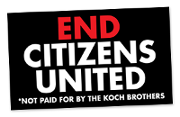Biblio
Filters: First Letter Of Last Name is S [Clear All Filters]
(1906). The Writings of Henry David Thoreau: Cape Cod and Miscellanies.
"If a man was tossed out of a window when an infant, and so made a cripple for life, or scared out of his wits by the Indians, it is regretted chiefly because he was thus incapacitated for — business! I think that there is nothing, not even crime, more opposed to poetry, to philosophy, ay, to life itself, than this incessant business." (p. 457)
(1994). Working Without a Net: How to Survive and Thrive in Today's High Risk Business World.
"Self-disclosers explain to others who they are, not just what they do. No one builds relationships unless they reveal more than job-related facts. Contrary to the old paradigm—which held that others don't have the right to know about your personal life—the new paradigm says that it's a necessity that they know." (p. 71)
(1995). Working Without a Net.
"Self-disclosers explain to others who they are, not just what they do. No one builds relationships unless they reveal more than job-related facts. Contrary to the old paradigm—which held that others don't have the right to know about your personal life—the new paradigm says that it's a necessity that they know." (p. 71)
(1990). Working With Difficult People.
Phenomenal advances in technology have led to a demand for speedier production. Couple that with hiring and firing in the labor market, and stress may become overwhelming. Even patient people can appear apoplectic."
(2000). Work Rage: Identify the Problems, Implement the Solutions.
"Ocassionally, I encounter and organization that really does practice what it preaches, or 'walks the talk'. But I can say with great certainty that the companies that really do a lot of talking and walking are few and far between. There is a lot of talking but very little walking out there in the big wide world of management.
The potential for rage in these controlling organizations is going to be higher, and for several reasons. When you have a mentoring, coaching, and collaborative management style, employees tend more toward higher productivity, efficiency, and effectiveness, and there is a happier workplace atmosphere. Conversely, when there is a domineering, controlling, or even bullying environment, the employees feel threatened, are less productive, feel highly stressed and are unhappy." (p. 53)
The potential for rage in these controlling organizations is going to be higher, and for several reasons. When you have a mentoring, coaching, and collaborative management style, employees tend more toward higher productivity, efficiency, and effectiveness, and there is a happier workplace atmosphere. Conversely, when there is a domineering, controlling, or even bullying environment, the employees feel threatened, are less productive, feel highly stressed and are unhappy." (p. 53)
(1999). When Good Companies Do Bad Things: Responsibility and Risk in an Age of Globalization.
"From our participation in scores of conferences and conversations about corporate social responsibility, we have found that most of us bring heavy baggage to this issue in the form of deep-seated and often unquestioned assumptions." (p. 96)
(1994). What You Can Change and What You Can't: The Complete Guide to Successful Self-Improvement.
"It is a disturbing idea that depressed people see reality correctly while nondepressed people distort reality in a self-serving way. As a therapist I was trained to believe that it is my job to help a depressed patient to feel both happier and see the world more clearly. I am supposed to be the agent of happiness as well as the agent of truth. But maybe truth and happiness antagonize each other. Perhaps what we have considered good therapy for a depressed patient merely nurtures benign illusions, making the patient think that her world is better than it actually is." (p. 199)
(1996). WebMaster in a Nutshell.
(1994). The Unwritten Rules of the Game: Master Them, Shatter Them, and Break Through the Barriers to Organizational Change.
"The orthodox wisdom tells us that if we want major and rapid changes in behavior, then the only way to achieve them is for people to feel that their jobs are on the line. So, we are supposed to engineer circumstances that will create a sense of urgency—let us be honest, a sense of fear—within the body of our organizations. And with that stick we can beat our employees into a new mindset.
The established dogma is a lie. Worse, it is a self serving and dangerous lie. It has become a myth that we have all been told for so long by so many people, that we in turn have passed it on to our own colleagues and so reinforced the apparent validity and common sense of the gospel." (p. 137)
The established dogma is a lie. Worse, it is a self serving and dangerous lie. It has become a myth that we have all been told for so long by so many people, that we in turn have passed it on to our own colleagues and so reinforced the apparent validity and common sense of the gospel." (p. 137)
(1999). Understanding Directory Services.
(2005). Trump: The Art of the Deal.
Ballantine Books.
"Most people are surprised by the way I work. I play it very loose. I don't carry a briefcase. I try not to schedule too many meetings. I leave my door open. You can't be imaginative or entrepreneurial if you've got too much structure. I prefer to come to work each day and just see what develops."
(2007). True north: discover your authentic leadership.
"When you do not feel in a safe place, you cover your core self to protect it from exposure and harm, and you develop a false self." (p. 77)
(1988). Take This Job and Love It: How to Change Your Work Without Changing Your Job.
"Burnout is of epidemic proportions because of a delay in companies' responding to the new needs of their workforce, or mismatch between what people want from their job and what the job offers them. Burnout signals not that people are working too hard but that they are not used enough. It recedes when the individual worker is empowered to make the workplace different and when the company makes a commitment to serve its employees." (p. 39)
(1981). Stress/Unstress: How You Can Control Stress at Home and on the Job.
"The value of this Self Test for Stress Levels is that if you are getting totals of 300 or more, you are well-advised to take it easy for a year or so with any major life decisions. Not making a decision to change is an acceptable option."
(2000). Special Edition: Using Samba.
(2000). Sorting Things Out: Classification and Its Consequences.
"Information technology operates through a series of displacements, from action to representation, from the politics of conflict to the invisible politics of forms and bureaucracy. Decades ago, Max Weber wrote of the iron cage of bureaucracy. Modern humans, he posited, are constrained at every juncture from true freedom of action by a set of rules of our own making. Some of these rules are formal, most are not. Information infrastructure adds another level of depth to the iron cage. In its layers, and in its complex interdependencies, it is a gossamer web with iron at its core." (p. 320)
(C)2014 CC-BY-NC 3.0, workcreatively.org











 ]
]